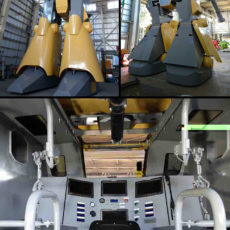
Photo credit: Hossein Heidari / UC Berkeley
Most 3D printers add material together (such as liquid molecules or powder grains being fused together) layer by layer, but this new invention can materialize just about any object using light. Developed by a research team at UC Berkley, the process begins with a 3D computer model of an item, which is then converted into a series of light patterns, and then using a standard video projector connected to a laptop, those are projected into a rotating glass cylinder with a light-sensitive resin (liquid polymers, photosensitive molecules and dissolved oxygen). Last, but not least, the light-activated molecules deplete the oxygen in specific three-dimensional areas of the resin, and once depleted, the liquid polymer transforms into a solid by forming molecular cross-links. Read more for a video and additional information.
“After the resulting completed object is removed from the cylinder, the remaining non-cured resin can be reused after being heated in an oxygen atmosphere. So far, the system has been used to print objects measuring up to 4 inches in diameter (102 mm), with build times ranging from 30 to 120 seconds. Not only are those items smooth because they’re printed “all at once” instead of layer-by-layer, but they’re also more flexible than traditional 3D-printed objects,” reports New Atlas.


